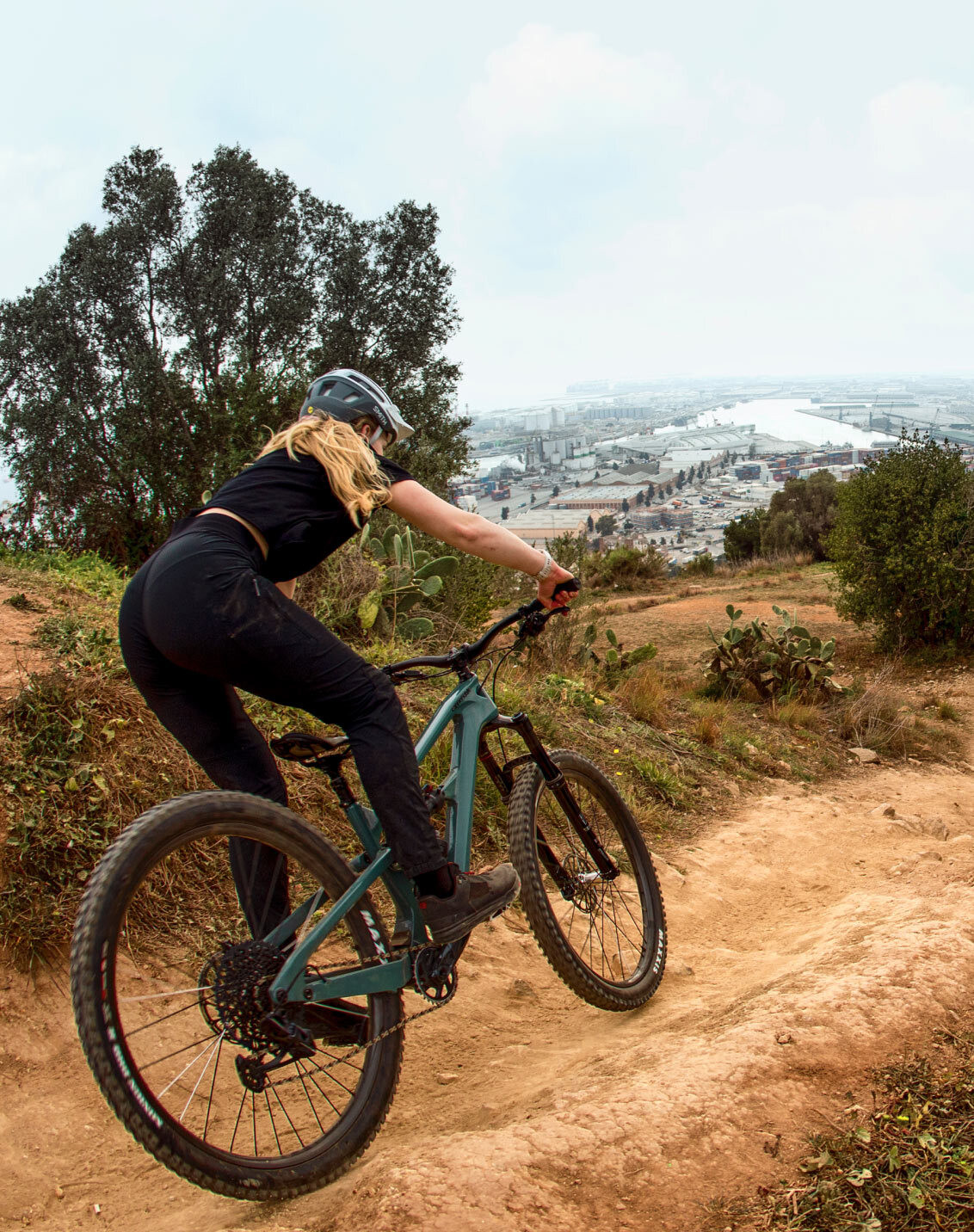Mountain biking has exploded in popularity, offering thrill-seekers and fitness enthusiasts alike an exciting way to explore the outdoors. With over 40 million people enjoying mountain biking annually, entering this dynamic sport can seem daunting. Choosing the right mountain bike is crucial for an enjoyable and safe experience. This guide will help you navigate the world of mountain bikes, with a special focus on how Cannondale mountain bikes stand out.
Understanding Mountain Bikes: A Buyer’s Guide
Before diving into specific models, it’s important to understand the different types of mountain bikes and their intended uses. The terrain you plan to ride will largely dictate the type of bike that will best suit your needs.
Mountain Bike Riding Styles and Cannondale Options
Mountain biking disciplines have evolved, leading to specialized bikes for various terrains and riding preferences. While numerous subcategories exist, understanding the main styles is key.
Trail Riding with Cannondale
Trail bikes are the most versatile mountain bikes, designed to handle a wide range of terrains. Cannondale excels in this category with models like the Trail series. These full-suspension bikes are capable on nearly any trail, balancing downhill capability with cross-country efficiency. Typically featuring 27.5 or 29-inch wheels and suspension travel between 130mm and 160mm, Cannondale trail bikes are built for fun and exploration.
 Cannondale Cross Country Bikes
Cannondale Cross Country Bikes
Cross Country (XC) and Cannondale’s Speed Machines
Cross Country, or XC, riding focuses on speed and efficiency over longer distances, often in races. Cannondale’s Cross-Country range, including the Scalpel and F-Si models, are engineered for this purpose. XC bikes are designed for pedaling efficiency and lightweight performance. While hardtails are common in XC, Cannondale also offers full-suspension XC bikes with lockable front suspension for optimized power transfer on climbs. These bikes typically have 29-inch wheels and shorter suspension travel (80-120mm) prioritizing speed and agility.
 Cannondale Trail Bikes for varied terrain
Cannondale Trail Bikes for varied terrain
Electric Mountain Bikes: Cannondale’s Electrified Adventures
Electric Mountain Bikes (e-MTBs) are revolutionizing mountain biking, expanding possibilities for riders of all levels. Cannondale’s e-mountain bike lineup, such as the Moterra Neo and Habit Neo, provide pedal-assist power, making challenging climbs easier and extending ride distances. Cannondale e-MTBs are available in various styles, from trail to enduro, offering amplified power and capability while maintaining the core mountain biking experience. Whether you’re looking to conquer steeper hills or simply ride further, Cannondale e-MTBs offer a thrilling and accessible option.
 Cannondale Electric Mountain Bikes
Cannondale Electric Mountain Bikes
All-Mountain/Enduro: Pushing Limits with Cannondale
For riders who prioritize downhill performance but still need to pedal uphill, All-Mountain or Enduro bikes are ideal. Cannondale’s Jekyll series embodies this category, offering a more robust version of trail bikes. These bikes are built for aggressive riding, featuring longer suspension travel (140-180mm) and components designed for demanding descents. While heavier than trail bikes, Cannondale Enduro bikes are still capable climbers, providing a balance for challenging terrain.
Downhill/Park Bikes: Cannondale’s Gravity Focused Rides
Downhill bikes are specialized machines built for one purpose: descending at speed on challenging terrain. While Cannondale’s primary focus is not solely on downhill specific bikes, their longer travel enduro bikes can certainly handle bike park environments. Downhill bikes prioritize maximum suspension travel (180-200mm), robust frames, and components built to withstand extreme conditions. These bikes are less about pedaling efficiency and more about gravity-fueled thrills.
Suspension Systems on Cannondale Mountain Bikes
Suspension is a critical aspect of mountain bike performance, impacting comfort, control, and efficiency. Cannondale utilizes various suspension technologies across its mountain bike range.
Hardtail Cannondale Mountain Bikes
Hardtail mountain bikes, like certain models in Cannondale’s Trail and XC series, feature suspension forks in the front but a rigid rear frame. This design makes them lighter, more efficient for pedaling, and often more affordable. Cannondale hardtails are excellent for riders prioritizing speed and efficiency on smoother trails, while still offering front suspension to absorb bumps.
Full Suspension Cannondale Bikes: The All-Rounder
Full suspension, or dual suspension, bikes, found throughout Cannondale’s trail, enduro, and XC ranges, offer both front and rear suspension. This provides enhanced comfort, improved traction, and greater control on varied terrain. Cannondale’s full suspension designs are known for their performance and innovative technologies, such as their Lefty forks on some models, offering superior handling and responsiveness. While slightly heavier and potentially requiring more maintenance than hardtails, full suspension Cannondale bikes excel in providing a smooth and capable ride in diverse mountain biking conditions.
Rigid Mountain Bikes: Simplicity and Efficiency
Rigid mountain bikes, without any suspension, prioritize simplicity and efficiency on smoother surfaces. While less common in modern mountain biking, Cannondale focuses on hardtail and full suspension technologies to cater to the demands of contemporary trails.
Suspension Travel and Cannondale’s Intended Use
Suspension travel refers to the amount of movement the suspension provides to absorb impacts. Cannondale designs bikes with specific travel ranges tailored to their intended riding style.
Short Travel (100-120mm): Cannondale XC and Trail Efficiency
Short travel suspension, found on Cannondale’s XC bikes and some shorter travel trail models, prioritizes pedaling efficiency and responsiveness. These bikes are ideal for cross-country riding, racing, and trails where speed and climbing are key.
Mid-Travel (120-140mm): Versatile Cannondale Trail Bikes
Mid-travel suspension, common on many Cannondale trail bikes, strikes a balance between uphill efficiency and downhill capability. These bikes are versatile all-rounders, capable of handling a wide range of trails with confidence and comfort.
Long Travel (150-170mm+): Cannondale Enduro and Gravity Focus
Longer travel suspension, featured on Cannondale’s enduro and gravity-oriented bikes, is designed for aggressive downhill riding and demanding terrain. These bikes prioritize descending prowess and impact absorption, allowing riders to tackle steep and technical trails.
Pricing Considerations for Cannondale Mountain Bikes
Cannondale mountain bikes cater to a range of budgets, with prices varying based on components, frame material, and suspension technology.
Entry-Level Cannondale Mountain Bikes
Entry-level Cannondale mountain bikes, typically hardtails, offer a great starting point for beginners. While componentry may be more basic, Cannondale’s frame quality and design still shine through, providing a reliable and enjoyable riding experience.
Mid-Range Cannondale Bikes: Performance and Value
Mid-range Cannondale mountain bikes offer a significant step up in component quality and performance. This range often includes both hardtail and full-suspension options, providing a balance of value and capability for serious enthusiasts.
High-End Cannondale Mountain Bikes: Premium Performance
High-end Cannondale mountain bikes feature top-of-the-line components, advanced frame materials like carbon fiber, and cutting-edge suspension technologies. These bikes are designed for performance-oriented riders seeking the best possible experience and technological advancements Cannondale offers.
Frame Materials in Cannondale Mountain Bikes
Cannondale utilizes various frame materials to optimize performance and cater to different price points.
Aluminum: Cannondale’s SmartForm Technology
Aluminum is a popular choice for Cannondale frames due to its lightweight, stiffness, and affordability. Cannondale’s SmartForm alloy construction further enhances aluminum frames, optimizing strength-to-weight ratios and ride quality.
Carbon Fiber: Cannondale’s BallisTec and Premium Carbon
Carbon fiber frames are prevalent in higher-end Cannondale mountain bikes, offering significant weight savings and increased vibration damping for a smoother ride. Cannondale’s BallisTec carbon and premium carbon layups are engineered for specific performance characteristics, balancing stiffness, compliance, and durability.
Other Frame Materials: Cannondale’s Material Innovation
While aluminum and carbon fiber are most common, Cannondale also explores other materials and construction techniques to push the boundaries of mountain bike frame technology.
Wheel Size Choices with Cannondale
Cannondale mountain bikes are available with 27.5-inch and 29-inch wheel sizes, each offering distinct advantages.
27.5-inch Wheels: Agile and Playful
27.5-inch wheels offer a balance of agility and rollover capability. They are nimble and responsive, making them well-suited for tighter trails and riders who prioritize maneuverability.
29-inch Wheels: Speed and Rollover Efficiency
29-inch wheels excel in rollover capability and momentum. They provide a smoother ride over obstacles and maintain speed well, making them ideal for cross-country, trail riding, and covering ground efficiently. Cannondale often equips its XC and trail bikes with 29-inch wheels for their performance advantages.
Brake Systems on Cannondale Mountain Bikes
Cannondale mountain bikes predominantly feature disc brakes, offering superior stopping power and modulation compared to rim brakes.
Hydraulic Disc Brakes: Cannondale’s Performance Standard
Hydraulic disc brakes are the standard on most Cannondale mountain bikes, providing powerful and consistent braking performance in all conditions. They are sealed systems, requiring less maintenance and offering superior modulation for precise control.
Mechanical Disc Brakes: Entry-Level Cannondale Options
Mechanical disc brakes may be found on some entry-level Cannondale mountain bikes, offering a more affordable option while still providing improved stopping power over rim brakes.
Sizing Your Cannondale Mountain Bike
Proper bike sizing is crucial for comfort, efficiency, and control. Cannondale provides sizing charts and guidelines to help riders find the right fit. Factors like standover height, seat tube length, top tube length, and reach are important considerations. Consulting a Cannondale dealer or using online sizing tools can ensure you choose the correct size for your body and riding style.
Explore the Trails with Cannondale
Choosing the right Cannondale mountain bike involves considering your riding style, terrain, budget, and personal preferences. By understanding the different types of mountain bikes, suspension systems, frame materials, and wheel sizes, you can make an informed decision and select a Cannondale bike that will enhance your mountain biking adventures. With Cannondale’s commitment to innovation and quality, you can be confident in finding a bike that delivers exceptional performance and years of trail enjoyment.
Come ride with Cannondale. Find your perfect mountain bike today.


